This is the fifth in a series of posts on the Hasselblad X2D 100C camera and the XCD lenses. You will be able to find all the posts in this series by looking at the righthand column on this page and finding the Category “X2D”.
In the last post, I presented slanted edge MTF50 results for the Hasselblad 38 mm f/2.5 XCD lens on the X2D 100C camera. Please see that post for setup and test conditions.
In this post, I’ll show you images of the Siemens star on axis and at the right edge. All these images are tight crops that are magnified to about 170%. All were developed in Lightroom with sharpening amount set to 20 and otherwise at default. The images were white balanced to the gray star surround.
In the center:
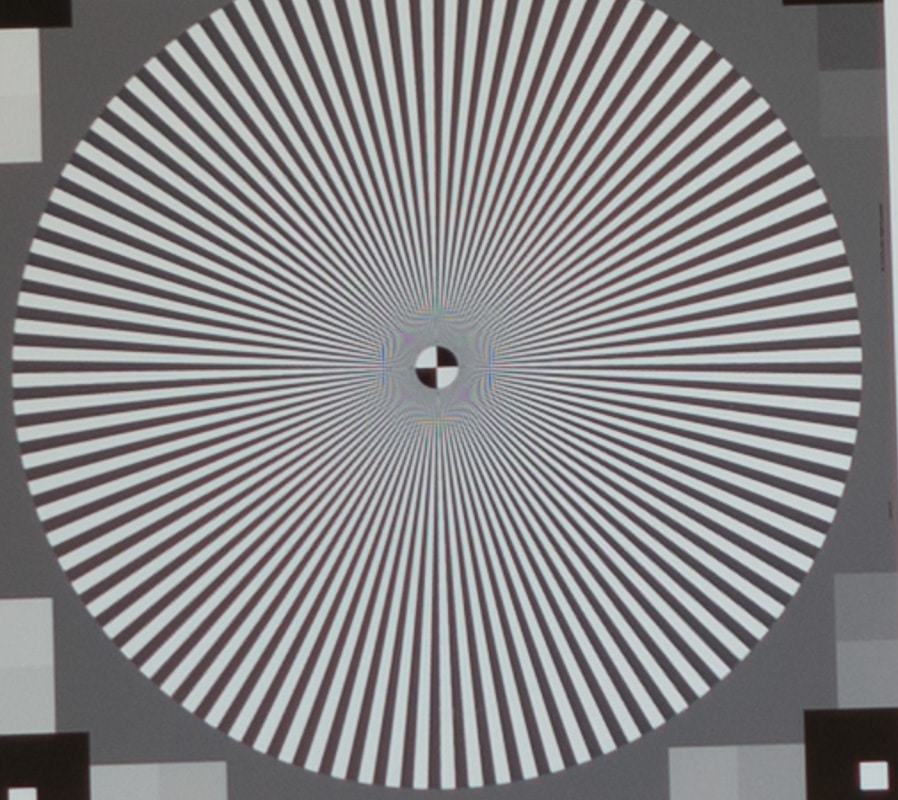
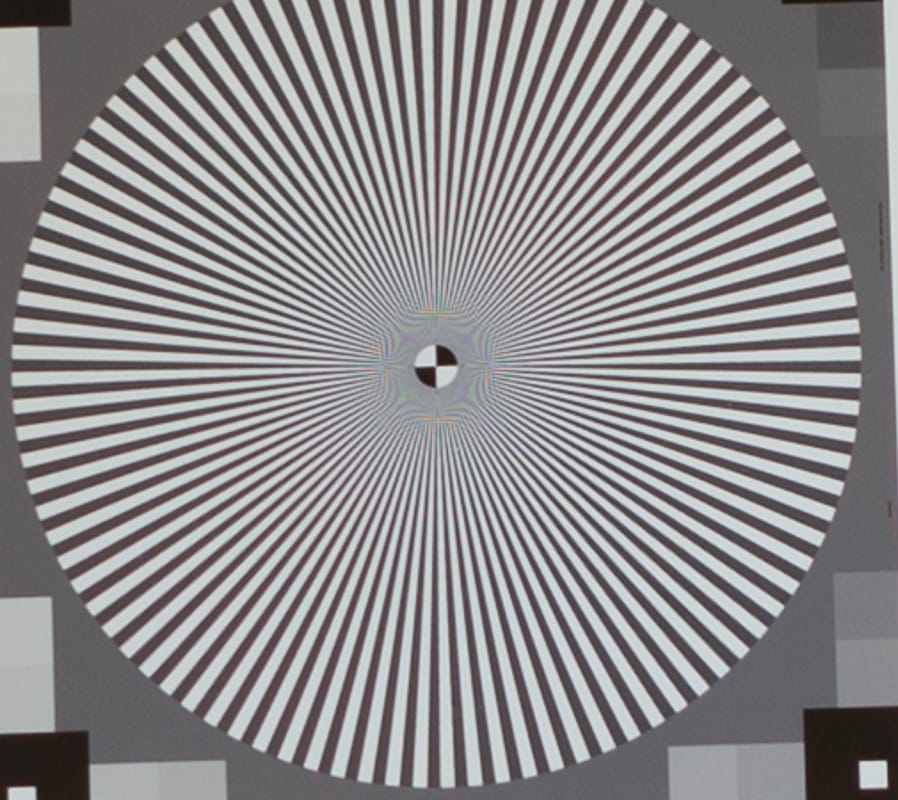
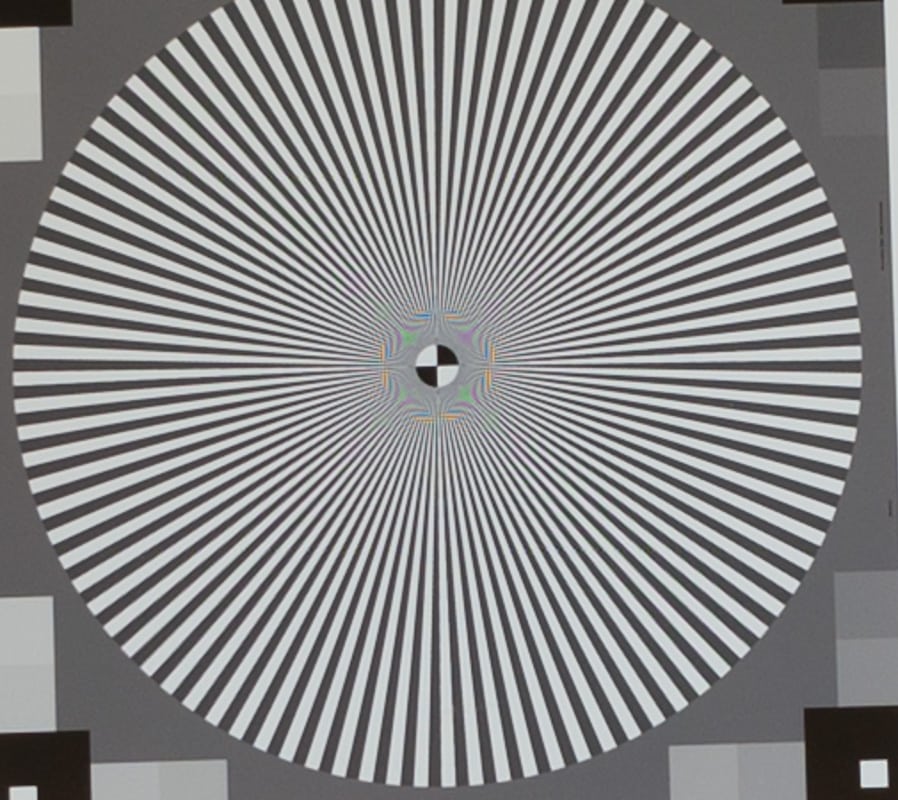
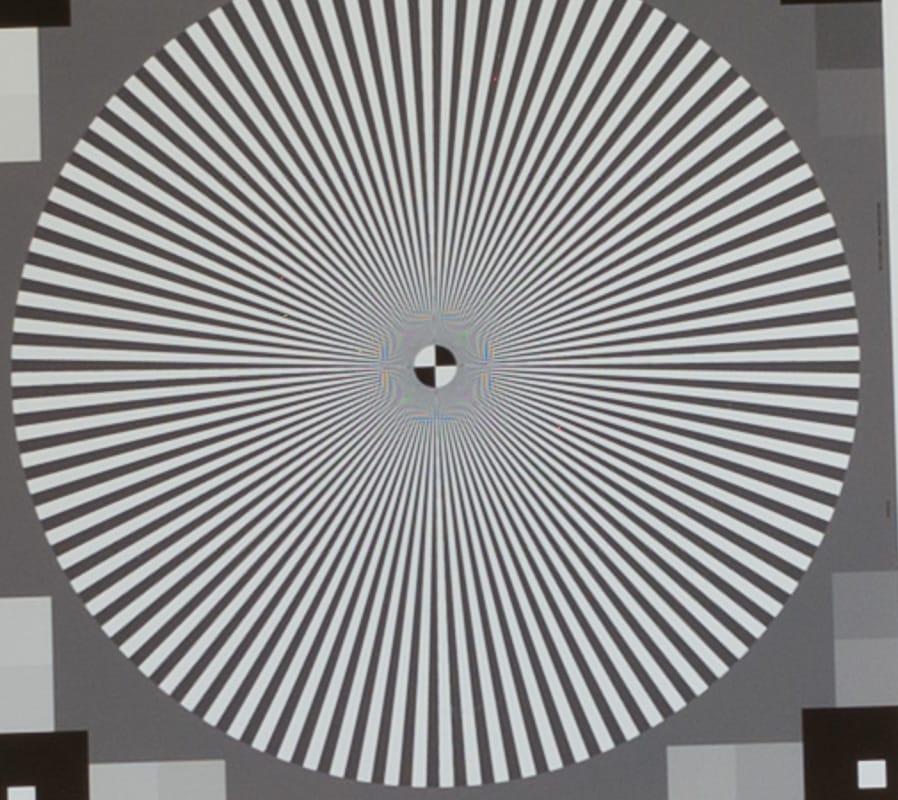
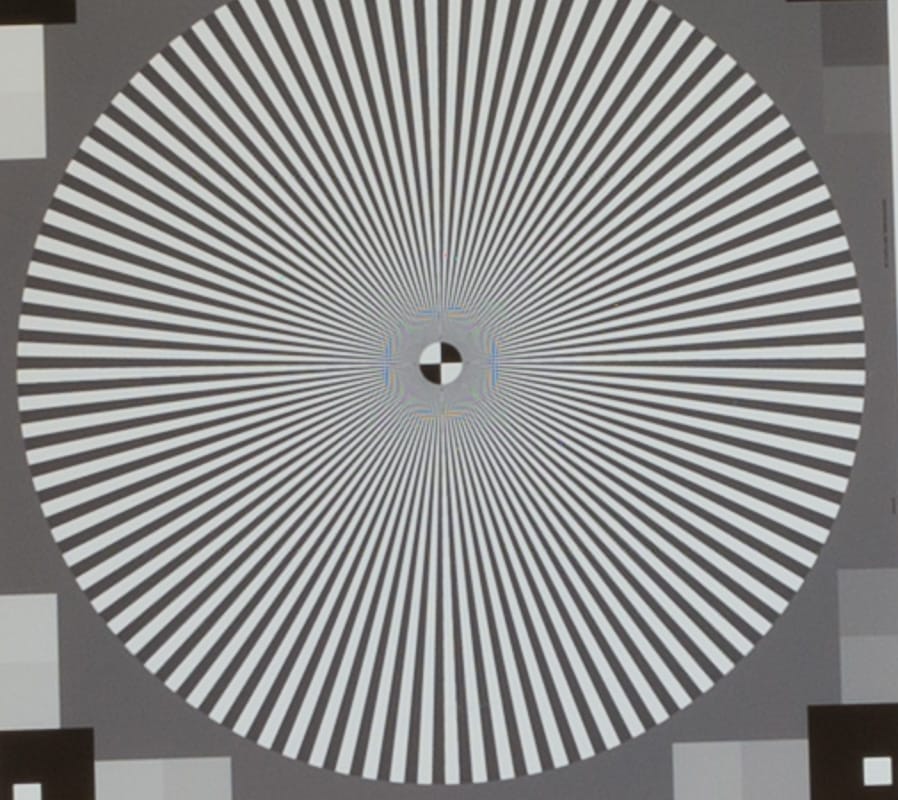
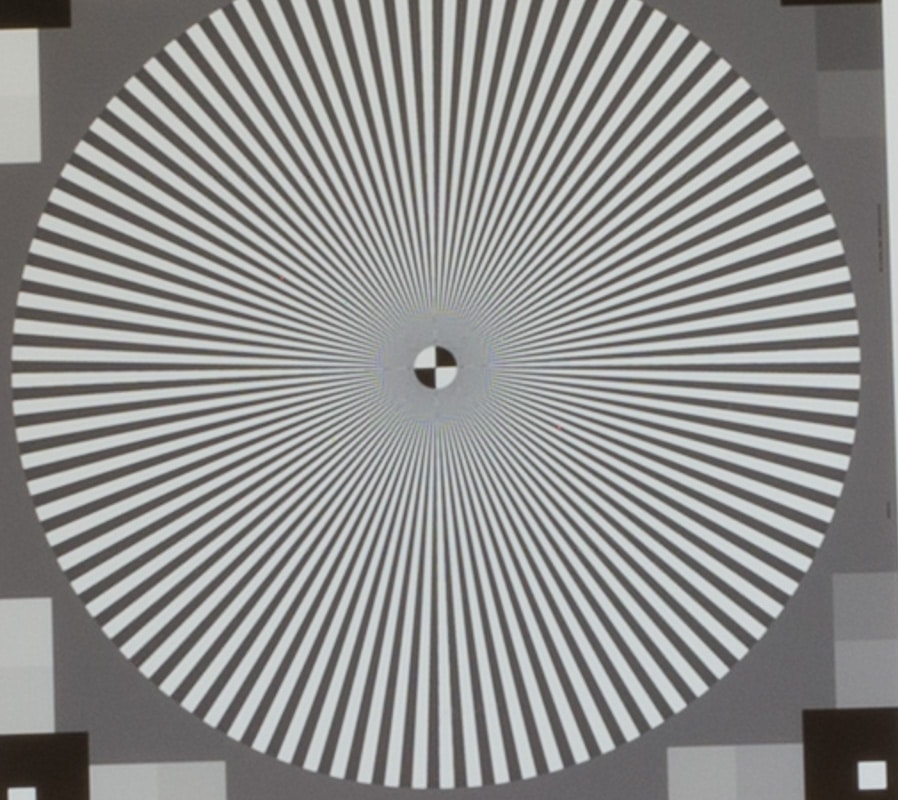
All but the f/11 image are pretty darned sharp. In the f/11 image, the diffusion blur is sufficient to avoid visible aliasing. That is also true of GF lenses on the GFX 100x.
With the target on the right side, for the image with the highest MTF50 for tangential (horizontal) edges, and a half-stop Exposure boost in Lr to approximately compensate for lens falloff at f/2.5.
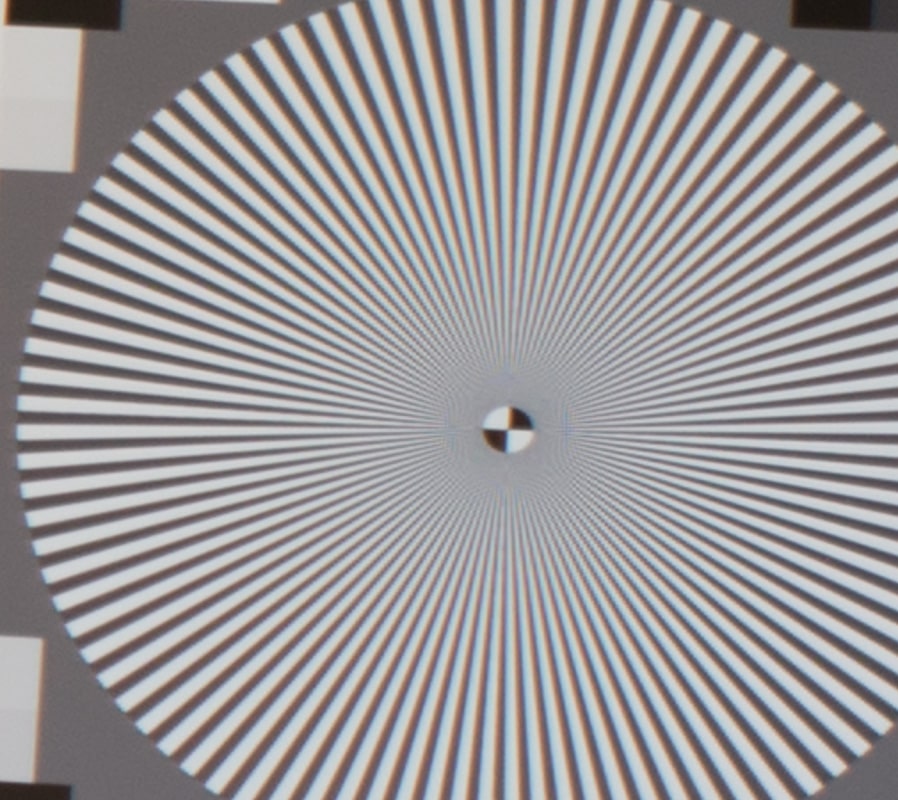
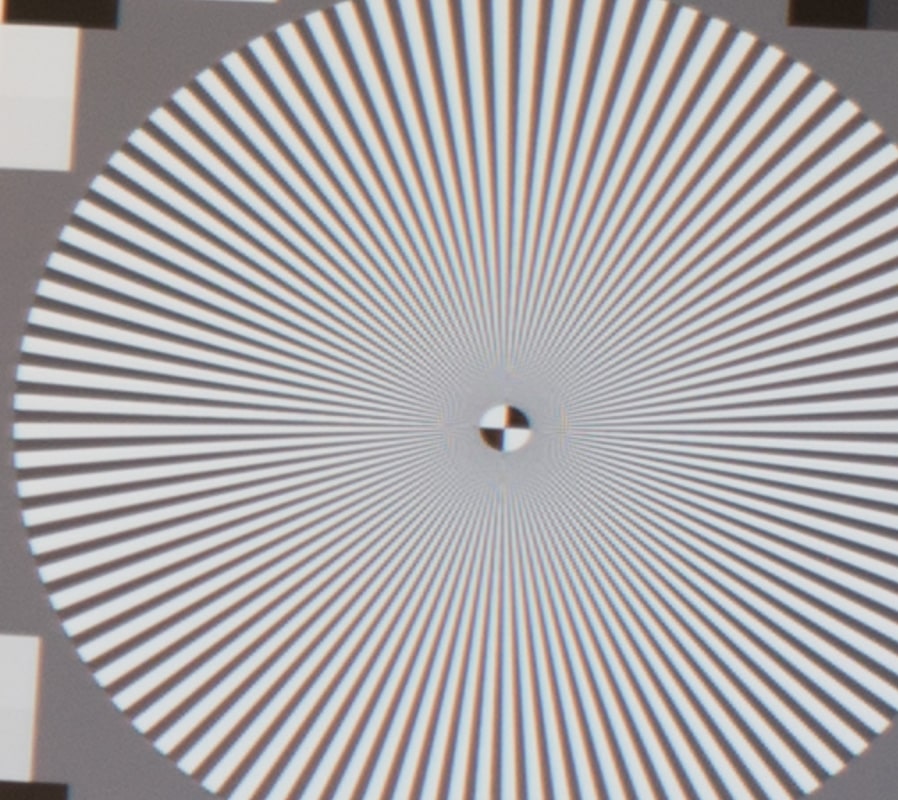
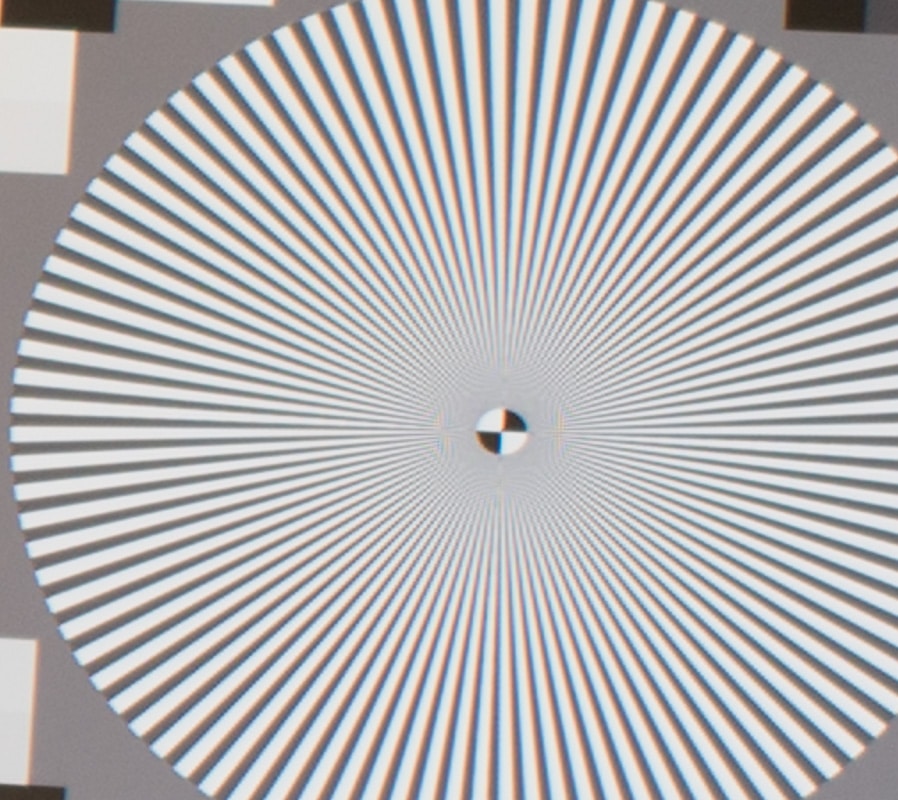
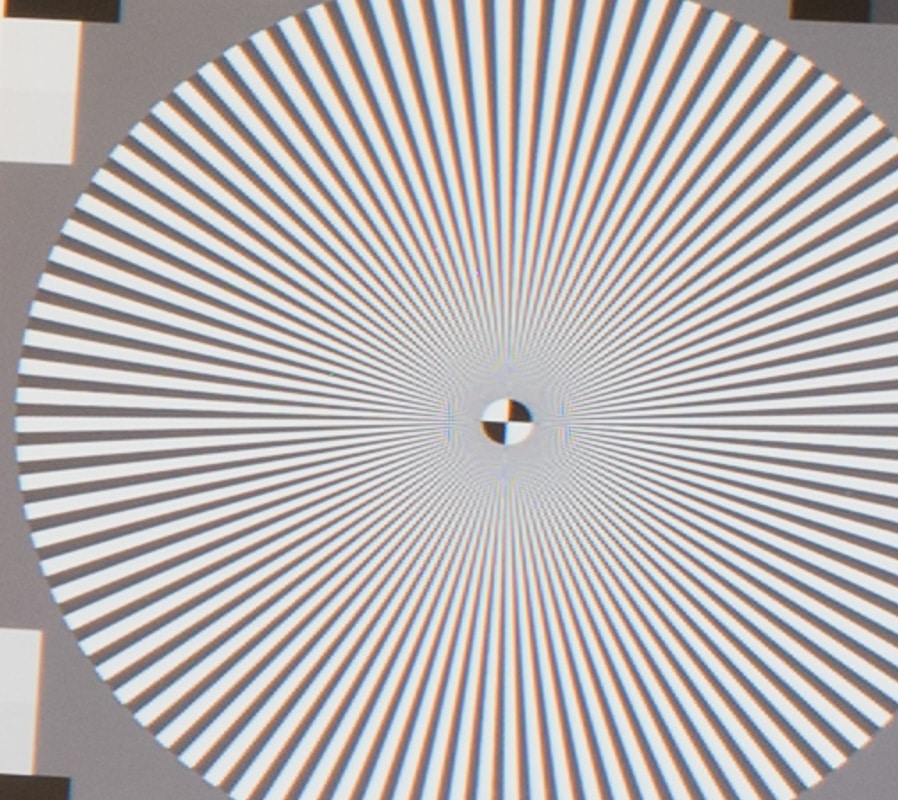
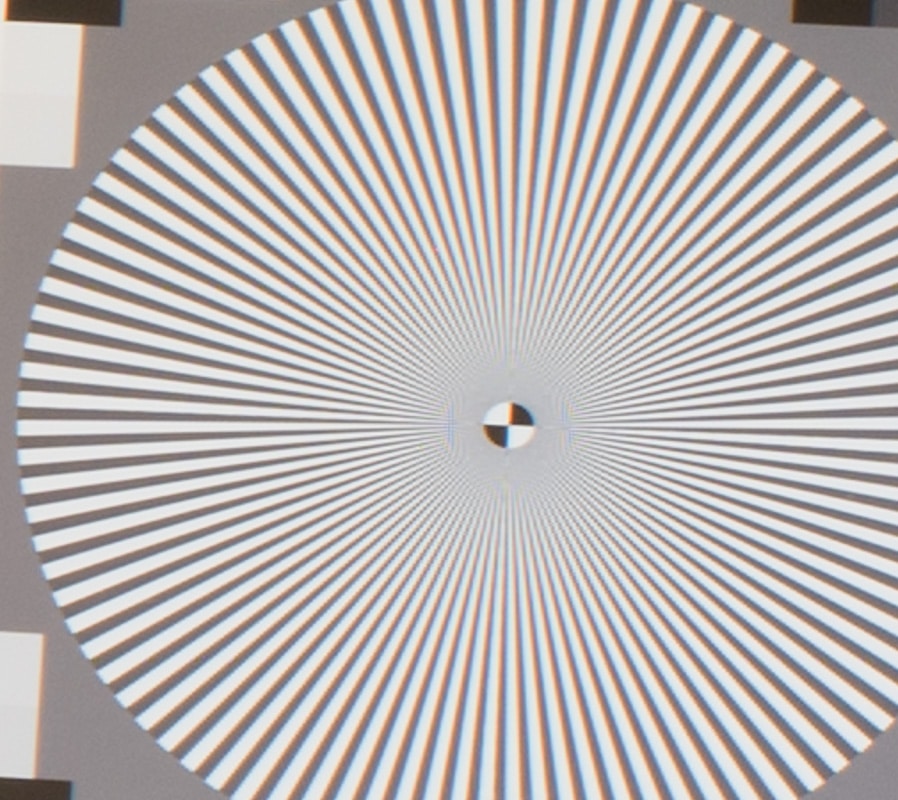
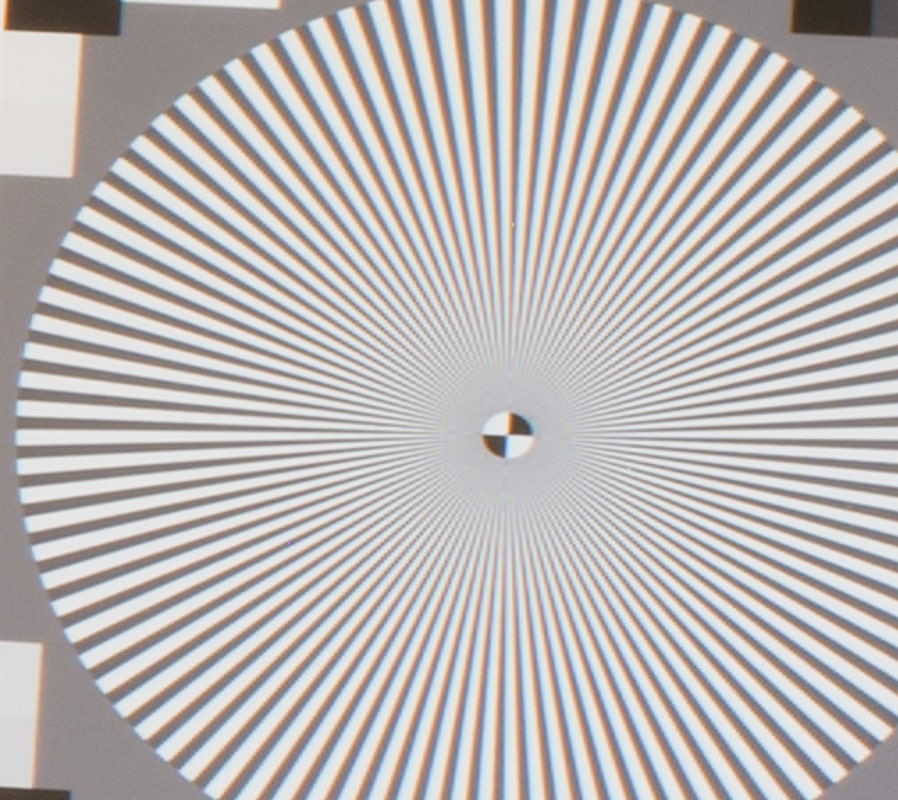
None of these are blow-your-mind sharp. Given the price of this lens, I’m a little disappointed.
How much does adding a shutter to every lens add to the price?
All the center shots look great to me. From what I can tell, the edge shots all have lost contrast in comparison, and start to show some CA. I’m assuming the exposure variation between edge shots has to do with the need to compensate for light fall-off.
Hard to say. Since the volume ins low, it probably adds a few hundred dollars to the cost of goods sold.